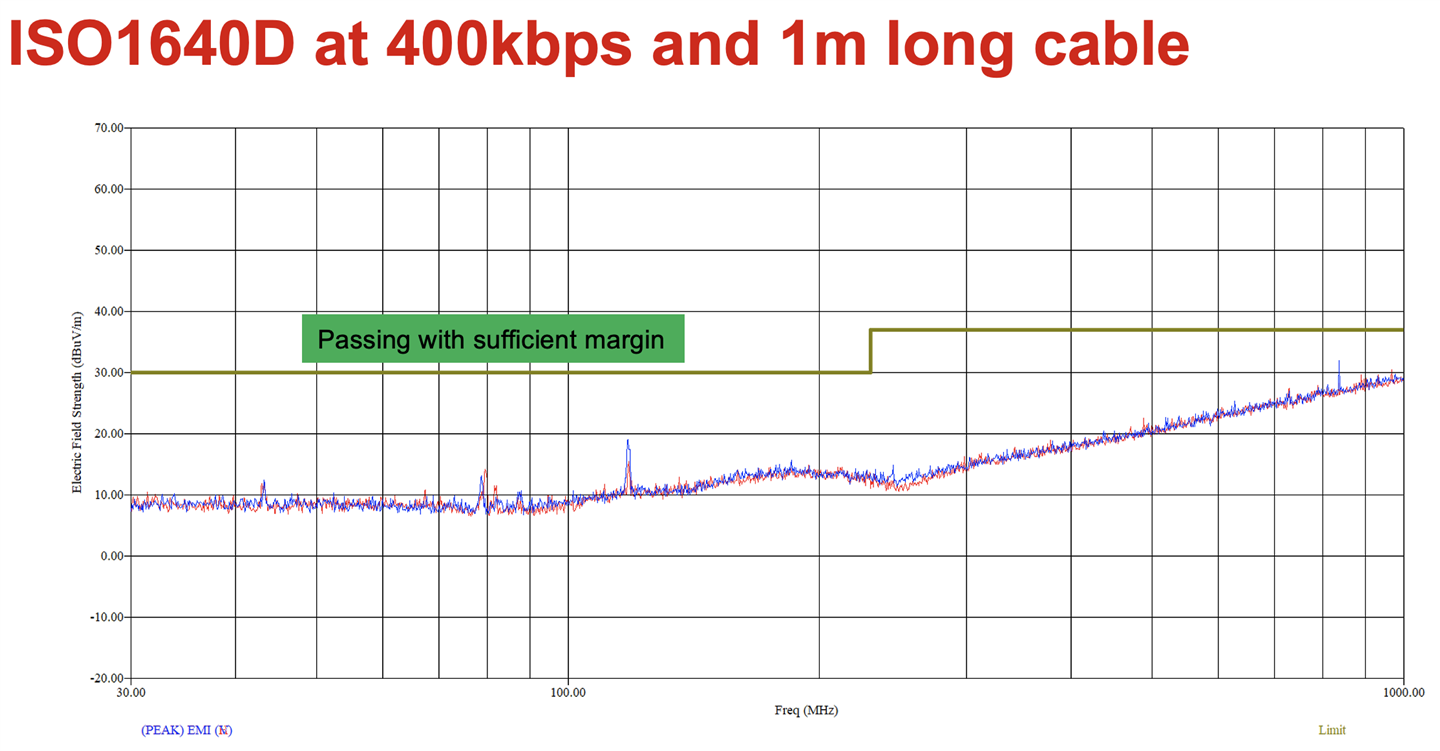Dear support,
I have red the datasheet of ISO1640 I2C driver and I get a question about the content of §8.3 of it (page 31/58):
Could you please provide me the frequency of the carrier used to transmit the data from the two sides of the driver?
Have you got any EMI measurement showing the radiation from this component (near fied or far field)?
Hope to get an answer from you.
Best regards.
Pierre Bruot


